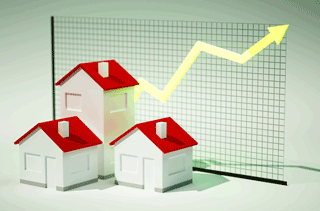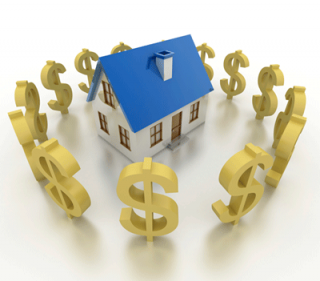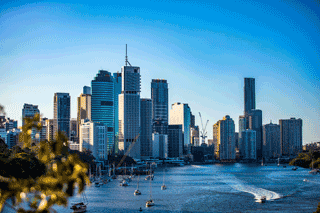Quote of the Week
“The lift in national housing values over the past year is the fastest pace of annual growth since February 2004.”
CoreLogic research director Tim Lawless
National Prices Up 18.4%
 House prices have risen by an average of 18.4% nationally in the past 12 months, led by a 20.1% increase in regional markets. The lift in national property values is the highest recorded since 2004.
House prices have risen by an average of 18.4% nationally in the past 12 months, led by a 20.1% increase in regional markets. The lift in national property values is the highest recorded since 2004.
The CoreLogic Home Value Index published this week indicates that house prices rose 1.8% in July, with Canberra (3.0%), Brisbane (2.2% and Sydney (2.1%) the leading markets.
In the first seven months of 2021, house prices have risen on average 15.6%, headed by Sydney’s 20.9% increase. All capital cities except Perth have risen at least 12% in the year to date, as have most of the regional markets.
Most markets have increased by at least 5% in the latest quarter. Sydney (8.7%), Hobart (7.3%), Regional NSW (7.0%), Regional Tasmania (6.6%), Canberra (7.9%) and Brisbane (6.7%) have all delivered significant price rises in the past three months.
“Dwelling sales are tracking 40% above the five-year average while active listings remain 26% below the five-year average,” says CoreLogic’s Tim Lawless.
Lockdowns Will Push Up Prices
 Half of respondents to a recent survey believe recent lockdowns will push property prices higher, with 23% indicating that regional property in particular will be boosted.
Half of respondents to a recent survey believe recent lockdowns will push property prices higher, with 23% indicating that regional property in particular will be boosted.
The survey by comparison website Canstar polled 1,024 Australians on their biggest financial stresses and investment opinions.
Asked about the biggest impact lockdowns will have on markets, 23% said a lack of stock will push prices up while another 23% said regional prices will rise as a result of work-from-home policies and the desire for less density. Only 11% predicted lockdowns will slow market activity.
Most said property is still the best investment, with 41% nominating houses as the best asset type and 10% opting for units. Only 18% of respondents said there are better investments than property, while 31% did not know.
The survey also polled respondents on their biggest financial worries, with 23% citing the rising cost-of-living. Rising property prices were the fourth biggest concern, nominated by 13% of respondents.
More Investors Selling Than Buying
 Despite strong yields and low vacancy rates, more than one in four homes sold in June belonged to investors. REA Group economist Paul Ryan says this is likely the result of the recent surge in property prices.
Despite strong yields and low vacancy rates, more than one in four homes sold in June belonged to investors. REA Group economist Paul Ryan says this is likely the result of the recent surge in property prices.
“While 2021 has seen investors enter the market, this has been outweighed by the number of investors cashing in on strong market conditions and heading for the exit,” he says. “Investors are likely selling to lock in gains after strong growth in the past year.”
Many of the investors selling are in Queensland, comprising 32% of properties sold in June. In WA, the figure was 21%. Ryan says the sell-up in these states could be linked to previous investment experiences. “Regional market conditions in these states have been weak over the preceding several years, so strong conditions may have been what investors were waiting for in order to sell,” he says.
In the smaller states, one in five South Australian properties sold belonged to investors, while the number was only 13.7% in Tasmania.
Unit Markets Join Growth Party
 While most national attention is focused on growth in house prices, apartment markets are increasingly providing price uplift.
While most national attention is focused on growth in house prices, apartment markets are increasingly providing price uplift.
All capital cities and state regional markets recorded some level of growth in their median unit prices in July, according to CoreLogic figures, led by increases in Regional Tasmania (2.7%), Regional South Australia (2.2%), Hobart (2.1%), Regional NSW (2.1%) and Darwin (1.8%).
In the year to date, three capital cities and four state regional markets have recorded double-digit increases in their median unit prices. The biggest increases have been seen in Hobart (22.3%), Regional Victoria (15.7%), Regional NSW (14.5%) and Darwin (13.5%).
In annual terms, Hobart, Darwin and Regional Victoria have all recorded 20% increases in their median unit prices. The national average has been an increase of 8.7% in the past 12 months, with every capital city and regional jurisdiction achieving an increase above 5%.
Overall the growth in apartment prices is at a level which would, in “normal” times, be considered noteworthy.
Most Who Ask Get A Cut
 Almost three-quarters of borrowers who ask for a rate cut get one, a new survey has found. A RateCity.com.au survey of over 1,000 mortgage holders found that, of those on a variable rate, 52% haggled with their bank for a lower rate. Over 73% of these people were successful in getting a rate reduction.
Almost three-quarters of borrowers who ask for a rate cut get one, a new survey has found. A RateCity.com.au survey of over 1,000 mortgage holders found that, of those on a variable rate, 52% haggled with their bank for a lower rate. Over 73% of these people were successful in getting a rate reduction.
A rate reduction of 0.25% could save the average mortgage holder $1,241 in interest after one year and $3,656 in three years – based on a $500,000 loan balance with 25 years remaining.
While most changes to fixed rates in the last two months have been increases, the opposite is happening in the variable rate market – 49 lenders have reduced at least one variable rate in the past two months, while 10 lenders have increased variable rates.
RateCity research director Sally Tindall says one phone call can potentially save the average variable rate mortgage holder thousands of dollars. “Variable rates are at record lows, however most of these deals are reserved for new customers, not existing ones, unless you specifically ask,” she says.




